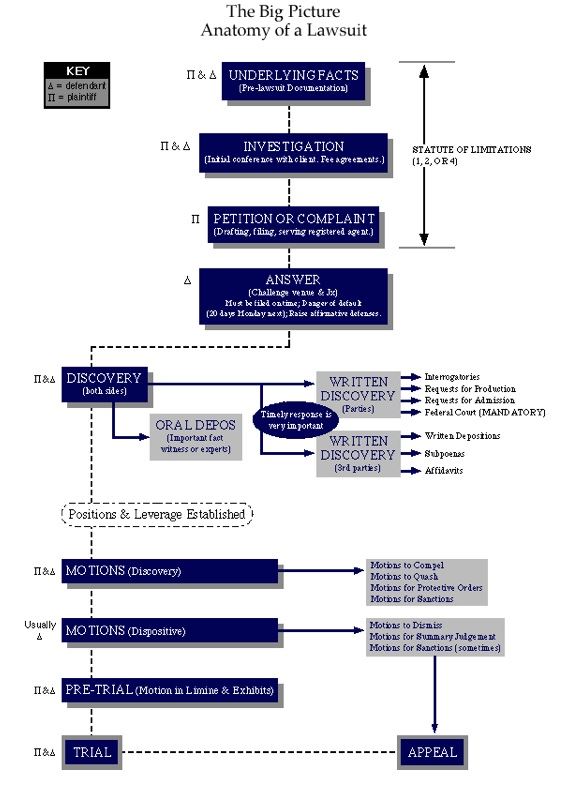The fascination that goes with courtroom drama is undeniable. And, no wonder. The most sensitive of emotional matters, and the most touching of human experiences, often play out in court. This is not new. From the ancient Greek plays by Aeschylus’ tragic Oresteia, which was literature’s first known courtroom drama, to modern successes, the process of courtroom presentation, and the ultimate rendition of judgment, provide an intersection for collisions of high principles, and basic human emotions.
So much of what happens before court is not well known, or not understood. Getting to court is a process, conducted through a series of procedures. The procedures, governed by complex rules, are embodied in codes of practice requiring years of study. The rules themselves are nuanced by judicial decisions involving controversial and complicated facts. Nothing about courtroom procedure seems to be easy.
The basic steps can be summarized in a tidy list, and shown in a chart. Anatomically, this is a lawsuit’s big picture:

A few of these steps deserve just a word or two of explanation.
Underlying Facts; Investigation
To the extent possible, smothering the underlying facts is important and helpful. This is done investigatively. Where possible, as many contacts, with as many witnesses, as time and the circumstances permit, are helpful. Engagement of expert witnesses, with an opportunity to review the facts in advance, makes a huge difference.
The Pleadings – Complaint & Answer
These two documents, filed early in the case, frame the issues. Their importance cannot be underestimated. The parties are “stuck” with them late in the case. Time and care should be expended in drafting them, and lawyers should not succumb to the temptation to give these short shrift.
Discovery
Much is written about discovery. Elsewhere on Domina Law Group pc llo’s website, suggestions about how to be good witnesses and comments about the discovery process appear (see Literature).
Motion Practice
Motion practice can be complicated, or it can be simple. This part of the judicial process is sometimes abused. Defense lawyers tend to file too many motions. Plaintiff lawyers tend to file too few. Motion practice is costly. In a well thought out, well pled case, the motion practice bills expense, but seldom provides any significant intra-litigation consequence. If the case is substantive, the motion practice makes its substance appear even more vividly to the defense, but at an expense that far outweighs what could come from simply thinking about the case, instead of drafting superficial, but easy to draft, and easy to bill for, motions.
Trial; Appeal
Since this is a brief article about procedures involved in getting to trial, no comments are offered here on these subjects. They are dealt with extensively and separately on Domina Law Group pc llo’s website in several separate discussions.
Domina Law Group pc llo is a firm of trial lawyers. We specialize in complex litigation on a national basis. Our lawyers are ethical, aggressive, and committed to providing spirit and vitality to the judicial system and our client’s legal rights.
